2025

Cui, W., Zhou, T., Levintal, E., García, C.P., Kisekka, I. and Dahlke, H.E., 2025. Modeling the impact of agricultural managed aquifer recharge (Ag-MAR) on soil water and nitrogen dynamics of the growing season. Agricultural Water Management, 317, p.109623.
In this study, DSSAT was used to model the impact of different Ag-MAR practices (e.g. continuous or intermittent flooding for 8–20 days) prior to the growing season to estimate their effect on the growing season water and nitrogen budgets. Results show that the timing (e.g. Jan–Apr) and intermittency of flooding (e.g. continuous vs. wet-dry cycles) directly impact the amount of nitrate leached, and the residual amount of nitrate available at the beginning (May) of the growing season.
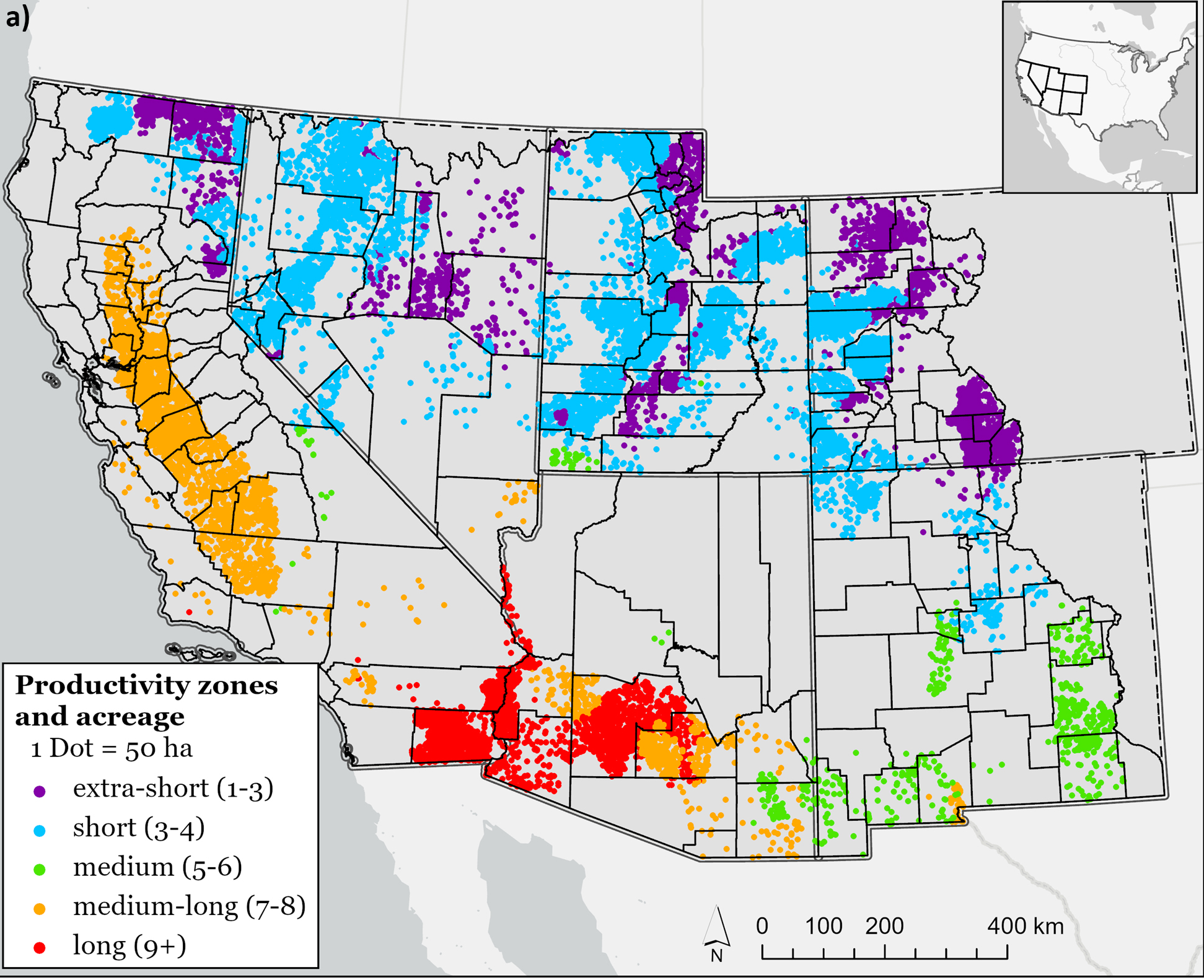
Waring, E., Dahlke, H.E., Abatzoglou, J.T., Medellin-Azuara, J., Yost, M.A., Bali, K.M., Naughton, C.C., Putnam, D.H., Sabie, R., Kishore, S., Santos, N.R., Viers, J.H. 2025. Reimagining alfalfa as a flexible crop for water security in the Southwestern USA. Science of the Total Environment, 90, 179851.
Alfalfa has been vilified as one of the thirstiest crops in the semi-arid southwestern USA and partially responsible for decreased water security in the Colorado, Rio Grande and San Joaquin River basins. In this study we demonstrate that adoption of summer deficit irrigation in alfalfa production can yield large water savings and flexibility to adapt to changing water supplies with minimal on-field economic impact.

Brandao Gontijo, J., Huang, L., Levintal, E., Prieto Garcıa, C., Erikson, C.B., Coyotl, A., Horwath, W.R., Dahlke, H.E., Rodrigues, J.L.M. Depth-dependent Metagenome-Assembled Genomes of Agricultural Soils under Managed Aquifer Recharge. Nature Scientific Data 12, Article number: 858.
In a field experiment conducted in a California vineyard, we sequenced soil DNA before and after water application of MAR. Through this process, we assembled 146 medium and 14 high-quality MAGs, uncovering a wide array of archaeal and bacterial taxa across different soil depths.

Turkeltaub, T., Prieto García, C., Dahlke. H.E., Levintal, E. 2025. Predictability of redox potential and oxygen status in managed aquifer recharge sites based on sensor data and regression techniques. Journal of Hydrology, 133486.
In our study, we recommend identifying the physiochemical characteristics of the unsaturated zone to determine the optimal flooding and drying times in MAR while avoiding potential water quality issues. Based on the calculated temporal coefficients, anoxic conditions develop after 62 h of ponding. Therefore, water application at the MAR site should be ceased to avoid these conditions, considering the infiltration rate at the site. The temporal coefficients indicate that the drying stage should last for 97 h to ensure the complete recovery of aerobic conditions in the MAR subsurface.
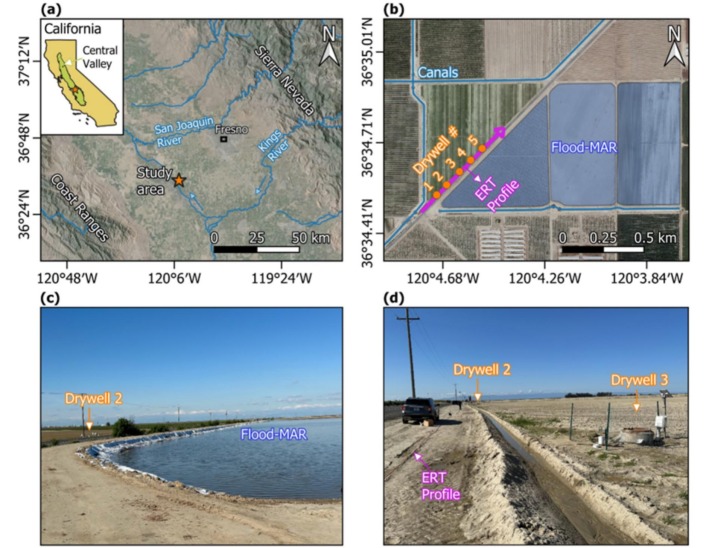
Arboleda-Zapata M.A., Osterman G., Li X., Sasidharan S., Dahlke H.E., S.A. Bradford. 2025. Time-lapse ensemble-based electrical resistivity tomography to monitor water flow from a managed aquifer recharge site. Journal of Hydrology, 133282.
In this study, we demonstrate the applicability of time-lapse electrical resistivity tomography (TL-ERT) for imaging the water flow and subsequent aquifer recharge at a drywell site in the CCV with a thick (67–72 m) vadose zone. Additionally, TL-ERT results were compared to point-scale observations from a collocated monitoring well.
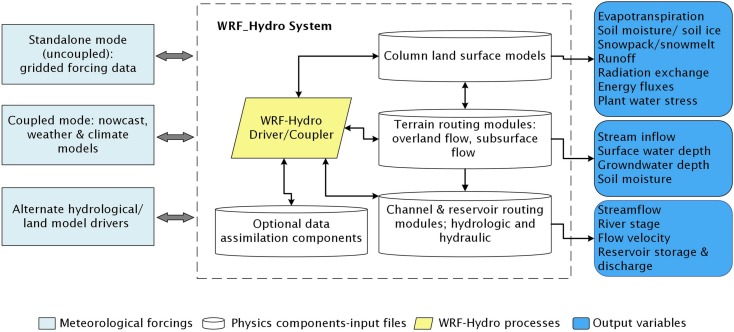
Kordrostami, F., Ustin, S., Koltunov, A., Tigabu, T., Dahlke. H.E., 2025. What is the current state and potential for hydrologic models to simulate vegetation dynamically? Journal of Hydrology, 133401.
This paper reviews the physical processes and parameters used within three widely used hydrological models, SWAT (Soil and Water Assessment Tool), WRF-Hydro (Weather Research and Forecasting Model Hydrological Modeling system), and the VIC (Variable Infiltration Capacity), to parameterize vegetation dynamics. We reviewed the relative strengths and limitations of each model’s physical processes to represent vegetation as a dynamic component, including recent advancements in modeling vegetation dynamics and their potential to decrease model uncertainty, particularly in the context of climate variability and land use/land cover changes.
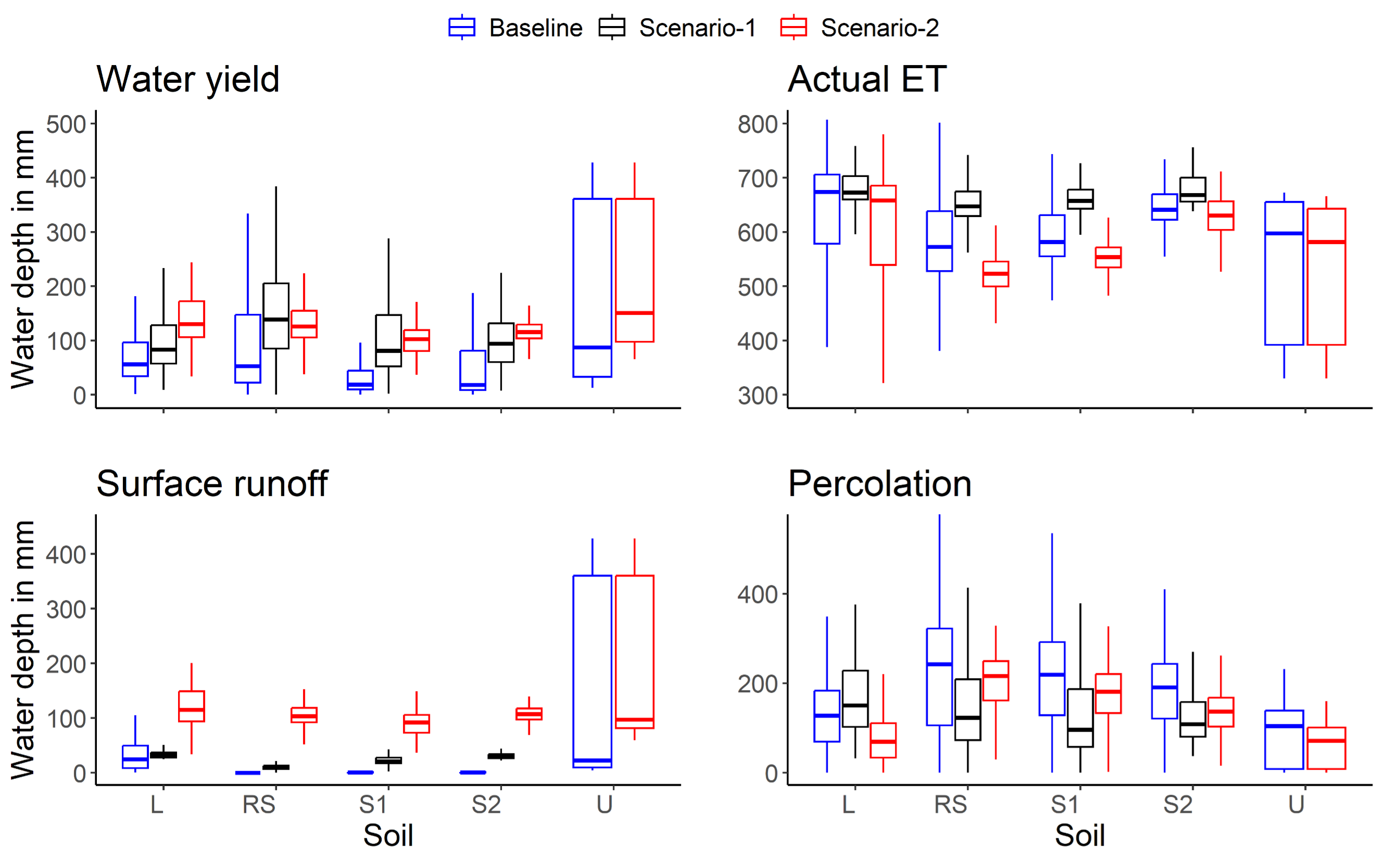
Tigabu T.B., Verena Müller E.,Wagner P.D.,Meles M.B., Dahlke H.E., Schüler G., N. Fohrer. Effects of forest harvesting operations on hydrology: Experiences from the Palatinate Forest Biosphere Reserve. Hydrologic Processes, 39:e70115.
This study employs the SWAT+ hydrological model to assess the impact of temporary (e.g. skid trails) and more permanent timber harvest activities and infrastructure on the hydrologic response of the Palatinate Forest Biosphere Reserve in Germany. We specifically analyse the role of soil compaction in hydrological responses by simulating water fluxes under three scenarios: uncompacted soil (baseline), compacted soil during harvest operations (Scenario-1) and due to infrastructure (Scenario-2).
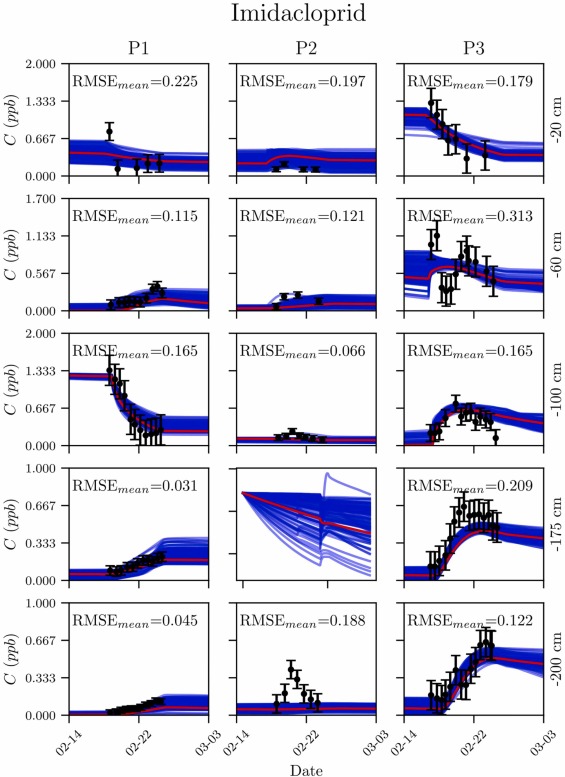
Zhou, T., Brunetti, G., Ruud, N., Šimůnek, J., Cui,W., Liao, A., Nasta, P., Gao, J., Levintal, E., García, C.P. and Dahlke, H.E., 2025. Simulation of pesticide transport in 70-m-thick soil profiles in response to large water applications. Journal of Hazardous Materials, p.137517.
This study employs a physically based unsaturated flow model, a Bayesian probabilistic approach and novel towed transient electromagnetic (tTEM) data to determine the fate and transport, especially the maximum transport depths (MTDs) of four pesticide residues (Imidacloprid, Thiamethoxam, Chlorantraniliprole, and Methoxyfenozide) in three 70-m-thick unsaturated zones (P1, P2, P3) of California’s Central Valley alluvial aquifer.
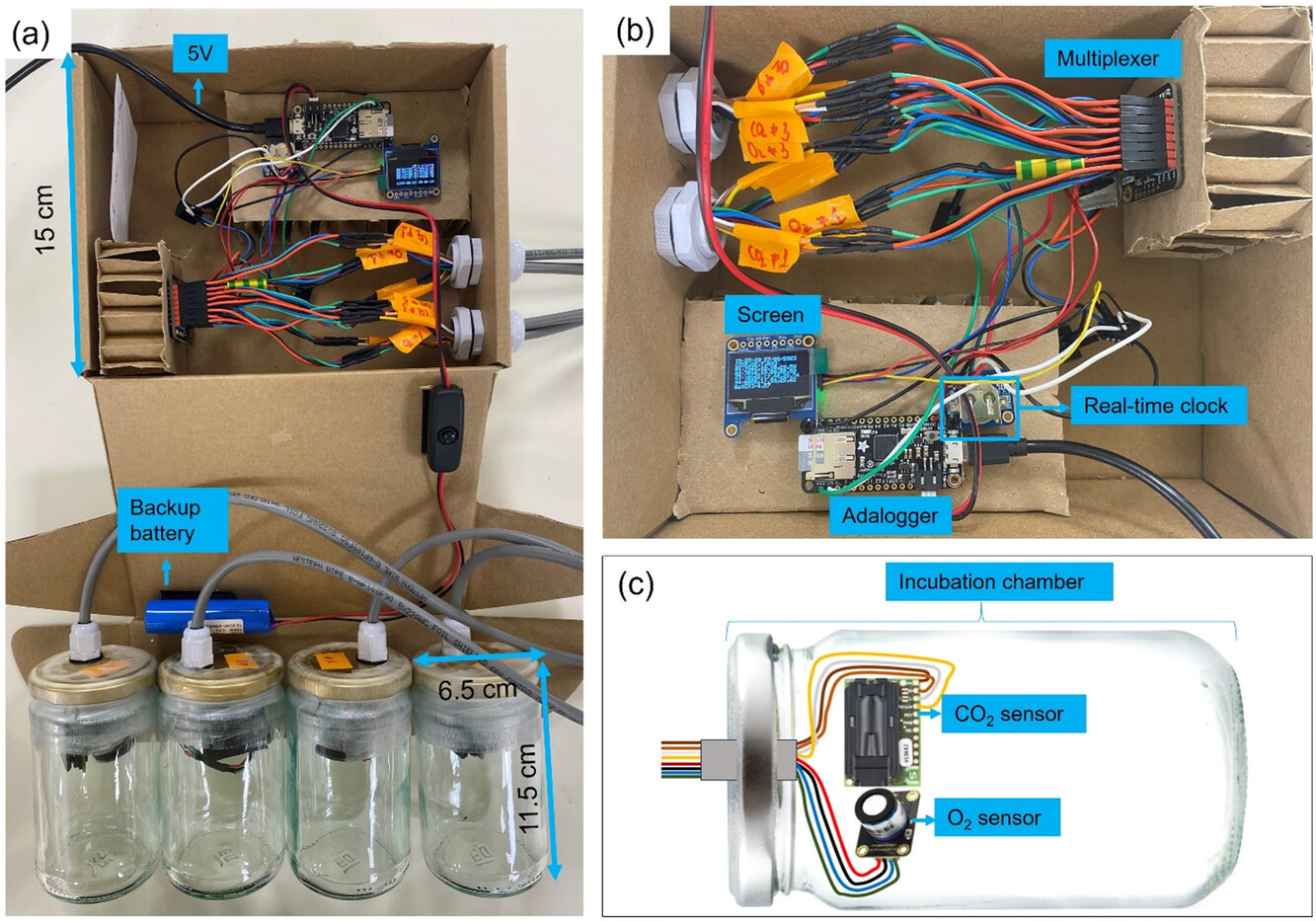
Nguyen, T.T., Altman, A., Huang, L., Rodrigues, J.L.M., Dahlke, H.E., Kamennaya, N.A. and Levintal, E., 2025. A portable low-cost incubation chamber for real-time characterization of soil respiration. Soil Science Society of America Journal, 89(1), p.e20800.
This study presents a new, portable, low-cost (∼$700), open-source sensor system to measure CO2 and O2 concentrations in four closed chambers. We provided non-engineering end-users with step-by-step instructions on how to build the system, enabling replication and customization.
2024
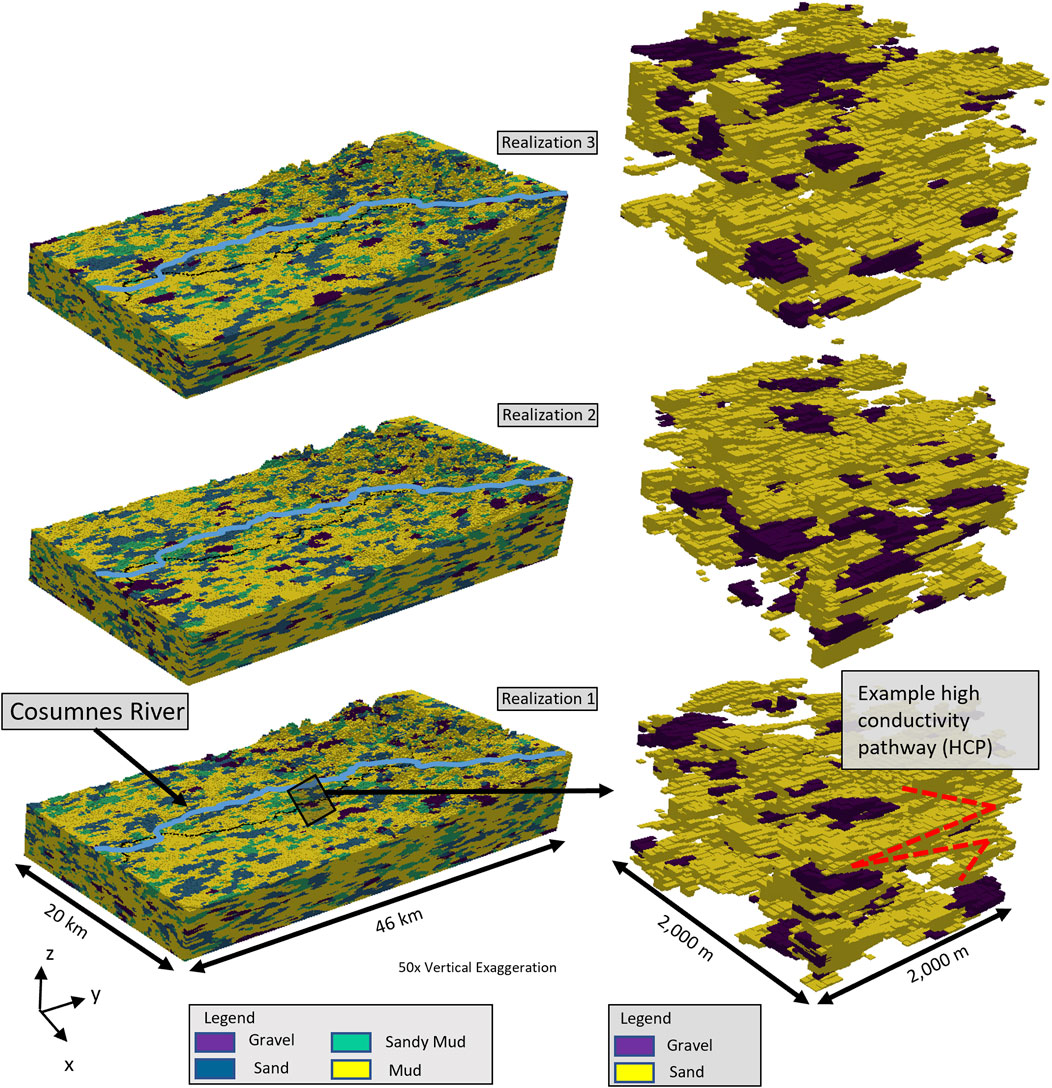
Calderwood, A.J., Rodriguez, A., Foglia, L. and Dahlke, H.E., 2024. Evaluating levee setback distance for the co-benefits of groundwater recharge and riparian ecosystem function. Frontiers in Environmental Science, 12, p.1421237.
In this study, we evaluated 100 heterogeneous hydrogeology realizations in the lower Cosumnes floodplain in California to estimate recharge with high-conductivity pathways (HCPs) under varying flood flows for a range of levee setback distances to identify the trade-offs in groundwater recharge and floodplain habitat. We find that on a regional scale, total recharge potential increases with setback distance, with the largest gains up to 1,400 m where there are outcropping HCPs and sufficient flow to inundate more of the setback area.
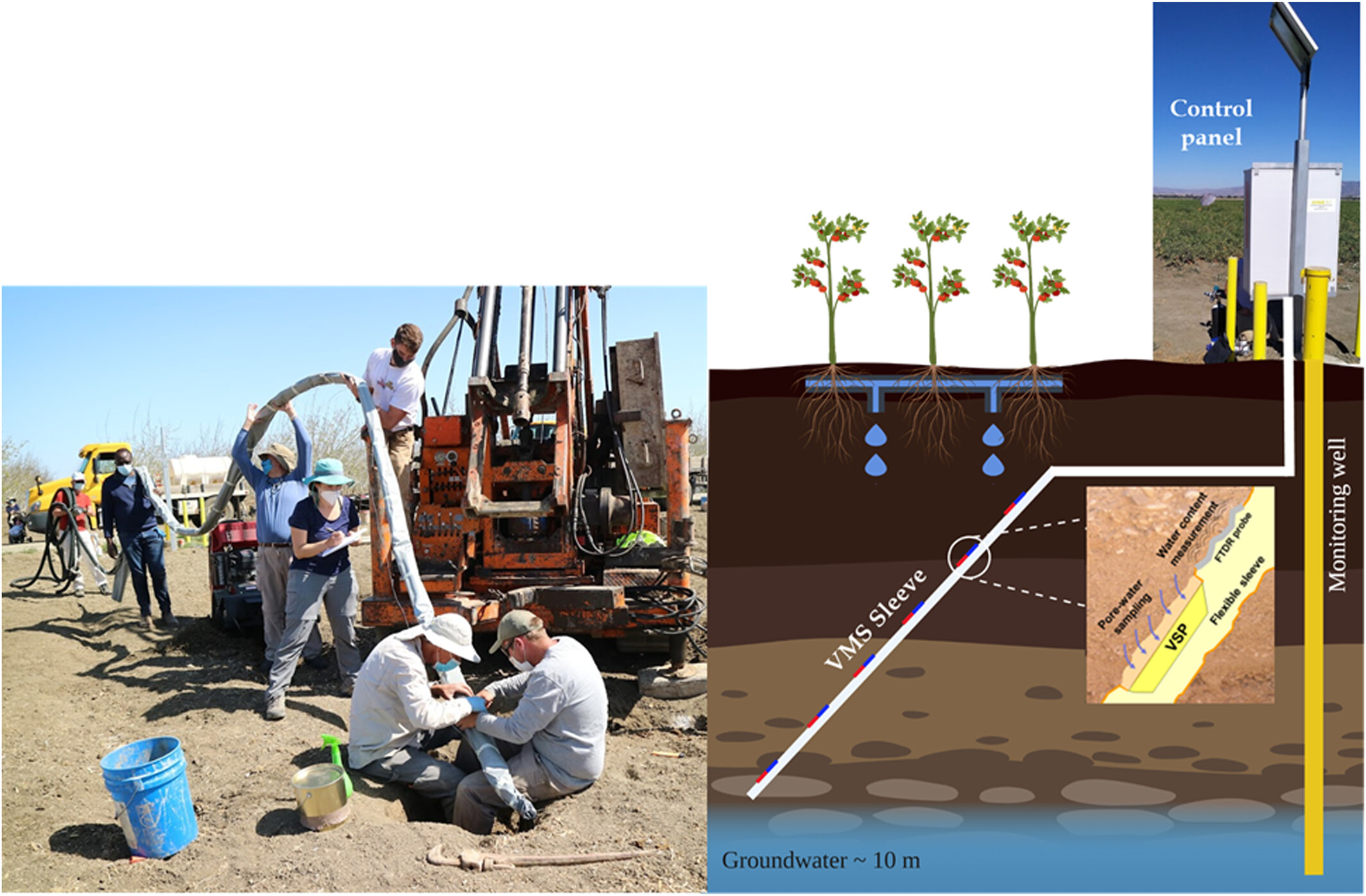
Raij-Hoffman, I., Dahan, O., Dahlke, H.E., Harter, T. and Kisekka, I., 2024. Assessing nitrate leaching during drought and extreme precipitation: Exploring deep vadose-zone monitoring, groundwater observations, and field mass balance. Water Resources Research, 60(11), p.e2024WR037973.
This study assesses nitrate leaching from an intensively cropped processing tomato rotation field using three different methods: deep vadose-zone monitoring, shallow groundwater intensive monitoring, and field-level mass balance. Results indicate varying degrees of nitrate leaching across methods, with all approaches detecting leaching events during the growing season and off-season precipitation.

Kourakos, G., Harter, T. and Dahlke, H.E., 2024. Ichnos: A universal parallel particle tracking tool for groundwater flow simulations. SoftwareX, 28, p.101893.
In this paper we describe Ichnos, a particle tracking code able to work with flow simulations obtained from either finite difference, finite element, adaptive mesh, or mesh free methods. Ichnos can trace virtual particles (streamlines) in flow fields of any fluid dynamics context, but its application is here focused on groundwater-based flow fields.
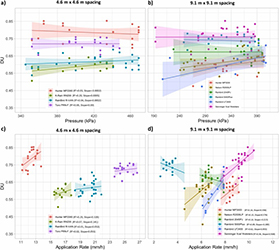
Spinelli, G., Bonarrigo, A.C., Cui, W., Grobowsky, K., Jordan, S.H., Ondris, K., García, C.P., Redding, K., Waldman, K.Z. and Dahlke, H.E., 2024. Evaluating the distribution uniformity of ten overhead sprinkler models used in container nurseries. Agricultural Water Management, 303, p.109042.
Our study investigated the DU of different overhead sprinkler types and models commonly used in outdoor nurseries in the United States to guide greater adoption of higher irrigation efficiency technology. Catch-can experiments compared ten different sprinkler models in small (4.6 m × 4.6 m) and large (9.1 m × 9.1 m) square experimental plots in Irvine, California.
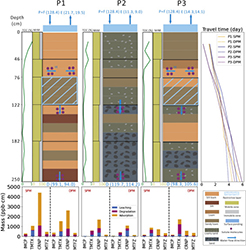
Zhou, T., Ruud, N., Šimůnek, J., Brunetti, G., Levintal, E., García, C.P. and Dahlke, H.E., 2024. The impact of agricultural managed aquifer recharge on the fate and transport of pesticides in the unsaturated zone. Water Research, p.122442.
This study employs a physically based unsaturated flow model to determine the fate and transport of residues of four pesticide in three vadose zone profiles characterized by differing fractions of sand (41 %, 61 %, and 84 %) in California’s Central Valley.
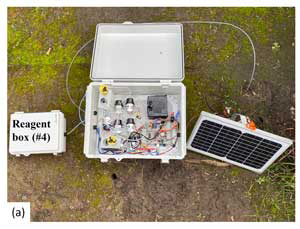
Bulusu, S., Prieto García, C., Dahlke, H.E. and Levintal, E., 2024. An open-source, low-cost system for continuous monitoring of low nitrate concentrations in soil and open water. Biogeosciences, VOL 21, NO 12, pp.3007-3013.
Study presents the development of a low-cost, portable, automated system for field measurements of nitrate in soil porewater and open water bodies. The system is based on the spectrophotometric determination of nitrate using a single reagent. The system design and processing software are openly accessible, including a building guide, to allow duplicating or changing the system according to user-specific needs.
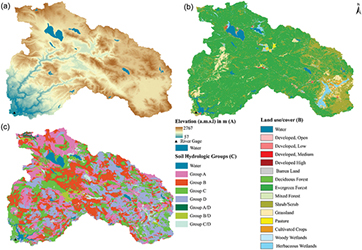
Tigabu, T.B., Visser, A., Kadir, T., Abudu, S., Cameron-Smith, P. and Dahlke, H.E., 2024. Optimization of the SWATPlus model to adequately predict different segments of a managed streamflow hydrograph. Hydrological Sciences Journal, VOL. 69, NO. 9, 1198–1217.
Study presents calibration approach for the SWAT+ model that independently fits model parameters for different flow segments of the hydrograph. The approach is demonstrated for the Feather River, California, USA, using daily streamflow from the Lake Oroville Reservoir outlet gage.
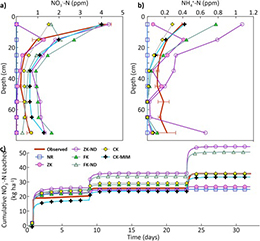
Murphy, N.P., Furman, A., Moshe, S.-B., and H.E. Dahlke. 2024. Comparison of reactive transport and non-equilibrium modeling approaches for the estimation of nitrate leaching under large water application events. Journal of Hydrology, VOL 628, 130583.
Studied nitrate leaching and biogeochemical processes in two soil columns under large water application events (groundwater recharge events) using a 1D non-equilibrium (e.g. mobile-immobile) reactive transport HP1 (HYDRUS-1D and PHREEQC) model.
2023
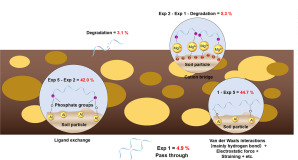
Liu, G., Guo, L., Wang, C., Liu, J., Hu, Z., Dahlke, H.E., Xie, E., Zhao, X., Huang, G., Niu, J. and K. Fa. 2023. Revealing the infiltration process and retention mechanisms of surface applied free DNA tracer through soil under flood irrigation. Science of The Total Environment, VOL 905, 167378.
Tested the fate and transport behavior of surface applied free DNA tracers through packed saturated sandy soil columns with a 10 cm water head mimicking flood irrigation.
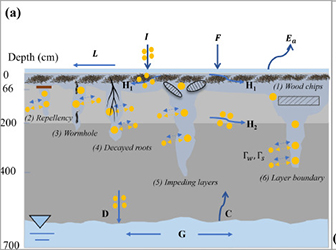
Zhou, T., Levintal, E., Brunetti, G., Jordan, S., Harter, T., Kisekka, I., Šimůnek, J., and H.E. Dahlke. 2023. Estimating the impact of vadose zone heterogeneity on agricultural managed aquifer recharge: A combined experimental and modeling study. Water Research, VOL 247, 120781.
Study uses the HYDRUS-1D software to simulate water flow and solute transport from the land surface to the groundwater table in three vadose zone profiles (LS, MS, HS) characterized by differing fractions of sand (44%, 47%, and 64%).

Ali, A.A., Tran, D.Q., Kovacs, K.F., and H.E. Dahlke. 2023. Hydro‐economic modeling of managed aquifer recharge in the lower Mississippi. Journal of the American Water Resources Association (JAWRA), VOL 59, 1413–1434.
Study explores the cost-benefit of adopting managed aquifer recharge (MAR) in the Mississippi Embayment Regional Aquifer. We find MAR is not economically attractive when the water cost is greater than $0.05/m3.
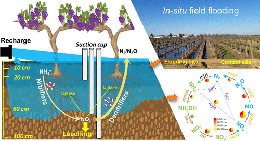
Huang, L., Levintal, E., Erikson, C.B., Coyotl, A., Horwath, W.R., Dahlke, H.E., and J.L.M. Rodrigues. 2023. Molecular and Dual-Isotopic Profiling of the Microbial Controls on Nitrogen Leaching in Agricultural Soils under Managed Aquifer Recharge. Environmental Science & Technology, VOL. 57, 11084-11095.
Study emphasizes that conducting groundwater recharge in agricultural systems requires understanding of the biological controls of nitrate leaching and nitrogen cycling processes.
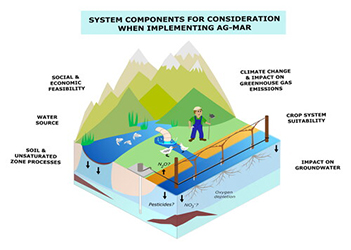
Levintal, E., Kniffin, M.L., Ganot, Y., Marwaha, N., Murphy, N.P. and Dahlke, H.E., 2023. Agricultural managed aquifer recharge (Ag-MAR)—a method for sustainable groundwater management: A review. Critical Reviews in Environmental Science and Technology, VOL. 53, NO. 3, 291–314.
This review presents a comprehensive overview of agricultural managed aquifer recharge (Ag-MAR) – its knowledge gaps, synergies, and tradeoffs using six key considerations: water source, soil and unsaturated zone processes, impact on groundwater, crop system suitability, climate change and impact on greenhouse gas emissions, and social and economic feasibility.
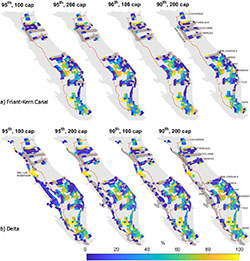
Kourakos, G., Brunetti, G., Bigelow, D.P., Wallander, S. and Dahlke, H.E., 2023. Optimizing Managed Aquifer Recharge Locations in California’s Central Valley using an Evolutionary Multi‐Objective Genetic Algorithm coupled with a Hydrological Simulation Model. Water Resources Research, p.e2022WR034129.
Study presents a simulation-optimization framework using a groundwater model to identify suitable managed aquifer recharge locations based on MAR cost and hydrologic benefits to the basin.
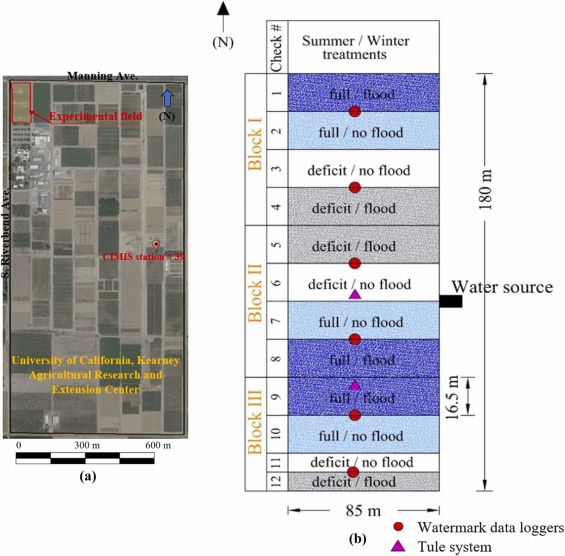
Bali, K.M., Mohamed, A.Z., Begna, S., Wang, D., Putnam, D., Dahlke, H.E. and Eltarabily, M.G., 2023. The use of HYDRUS-2D to simulate intermittent Agricultural Managed Aquifer Recharge (Ag-MAR) in Alfalfa in the San Joaquin Valley. Agricultural Water Management, 282, p.108296.
This study presents a HYDRUS-2D modeling study to estimate the net recharge in an alfalfa field grown on a sandy loam soil in a Mediterranean climate at Parlier, California, USA in 2020–2022.
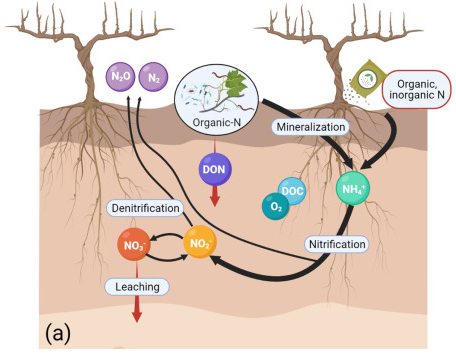
Levintal, E., Huang, L., García, C.P., Coyotl, A., Fidelibus, M.W., Horwath, W.R., Rodrigues, J.L.M. and Dahlke, H.E., 2023. Nitrogen fate during agricultural managed aquifer recharge: Linking plant response, hydrologic, and geochemical processes. Science of the Total Environment, 864, p.161206.
Study presents a conceptual model of biogeochemical transformations of nitrogen in soil under agricultural managed aquifer recharge and the potential of NO3− leaching to groundwater.
2022

Levintal, E., Kniffin, M.L., Ganot, Y., Marwaha, N., Murphy, N.P. and Dahlke, H.E., 2022. Agricultural managed aquifer recharge (Ag-MAR)—a method for sustainable groundwater management: A review. Critical Reviews in Environmental Science and Technology, pp.1-24. (invited)
Comprehensive overview on the distribution, need for common terminology, and benefits of agricultural managed aquifer recharge (Ag-MAR) highlighting six key considerations for implementation.

Wang, C., Liu, G., McNew, C.P., Volkmann, T.H.M., Pangle, L., Troch, P.A., Lyon, S.W., Kim, M., Huo, Z. and Dahlke, H.E., 2022. Simulation of experimental synthetic DNA tracer transport through the vadose zone. Water Research, 223, p.119009.
Simulation of water flow and breakthrough of deuterium and one free synthetic DNA tracer in a transient variably saturated sloped lysimeter using the Schijven and Šimůnek two-site kinetic sorption model in HYDRUS-2D.
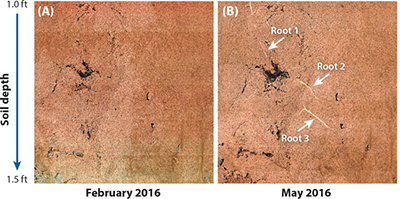
Ma, X., Dahlke, H., Duncan, R., Doll, D., Martinez, P., Lampinen, B. and Volder, A., 2022. Winter flooding recharges groundwater in almond orchards with limited effects on root dynamics and yield. California Agriculture, 76(2), pp.1-7.
Root production, tree water status and yield in two almond orchards in Northern California in response to capturing winter water runoff for groundwater recharge.
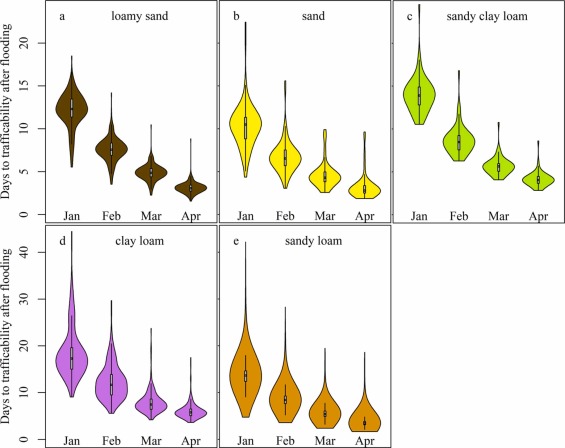
Devine, S.M., Dahlke, H.E. and O’Geen, A.T., 2022. Mapping time-to-trafficability for California agricultural soils after dormant season deep wetting. Soil and Tillage Research, 218, p.105316.
Tool to avoid soil compaction after dormant season deep wetting. Time-to-trafficability exceeded 20–30 days on loamy and fine soils in January but took less than 3 days on coarse soils in April.
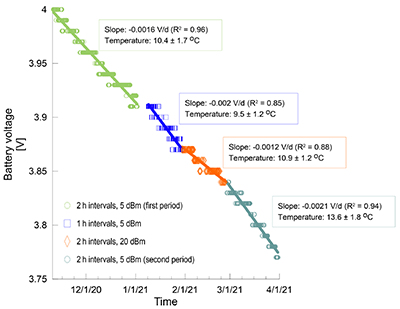
Levintal, E., Ganot, Y., Taylor, G., Freer-Smith, P., Suvocarev, K. and Dahlke, H.E., 2022. An underground, wireless, open-source, low-cost system for monitoring oxygen, temperature, and soil moisture. Soil, 8(1), pp.85-97.
System design, assembly, programming, deployment, and power management of a new underground, wireless, open-source, low-cost system for monitoring soil oxygen, temperature, and soil moisture.
2021
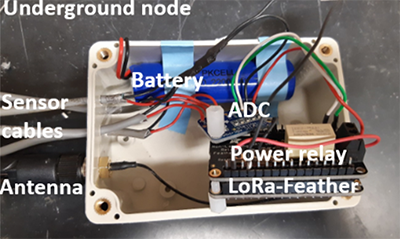
Levintal, E., Suvočarev, K., Taylor, G. and Dahlke, H.E., 2021. Embrace open-source sensors for local climate studies. Nature, 599(7883), p.32.
Call for the use of open-source, low-cost sensor systems in environmental science.
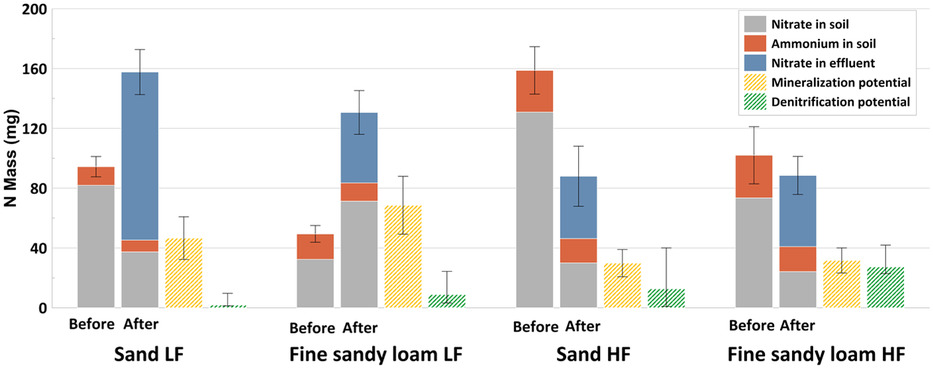
Murphy, N.P., Waterhouse, H. and Dahlke, H.E., 2021. Influence of agricultural managed aquifer recharge on nitrate transport: The role of soil texture and flooding frequency. Vadose Zone Journal, 20(5), p.e20150.
Effect of recharge practices on NO3− leaching and mineralization–denitrification processes in different soil systems.
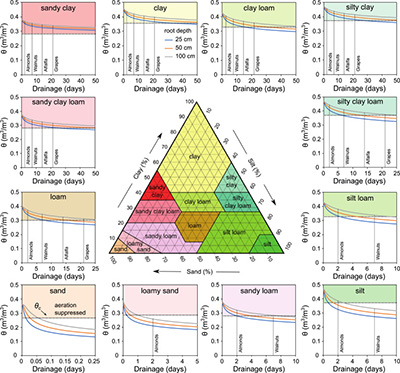
Ganot, Y. and Dahlke, H.E., 2021. A model for estimating Ag-MAR flooding duration based on crop tolerance, root depth, and soil texture data. Agricultural Water Management, 255, p.107031.
Model to estimate a save flooding duration for agricultural managed aquifer recharge considering plant tolerance, soil aeration, and soil hydraulic parameters. Estimates are provided for each USDA soil texture class.
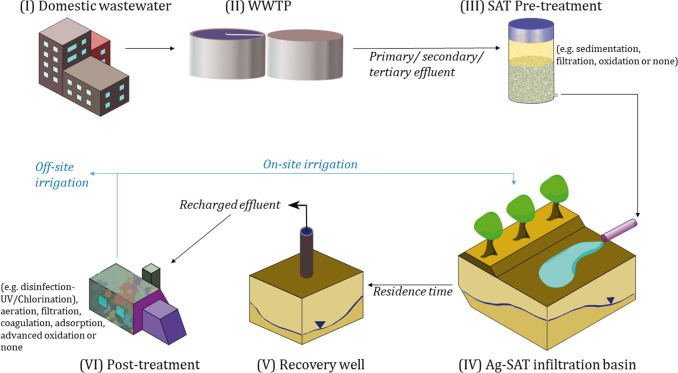
Grinshpan, M., Furman, A., Dahlke, H.E., Raveh, E. and Weisbrod, N., 2021. From managed aquifer recharge to soil aquifer treatment on agricultural soils: Concepts and challenges. Agricultural Water Management, 255, p.106991.
Concept and pilot study of using farmland for soil aquifer treatment (SAT) – recharge of secondary treated wastewater on agricultural fields.
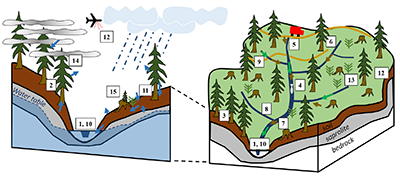
Dymond, S.F., Richardson, P.W., Webb, L.A., Keppeler, E.T., Arismendi, I., Bladon, K.D., Cafferata, P.H., Dahlke, H.E., Longstreth, D.L., Brand, P.K. and Ode, P.R., 2021. A field-based experiment on the influence of stand density reduction on watershed processes at the Caspar creek experimental watersheds in northern California. Frontiers in Forests and Global Change, 4, p.691732.
Process for designing a paired-watershed study using a large harvesting experiment at the Caspar Creek Experimental Watersheds in coastal California as an example to study the interactions between forest management and watershed biogeochemical and ecohydrological processes.
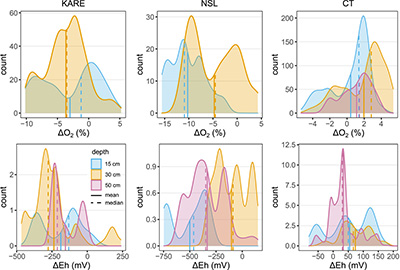
Ganot, Y. and Dahlke, H.E., 2021. Natural and forced soil aeration during agricultural managed aquifer recharge. Vadose Zone Journal, 20(3), p.e20128.
Use of O2 and redox potential as soil aeration quantifiers to test the impact of forced aeration by air-injection compared with natural soil aeration.
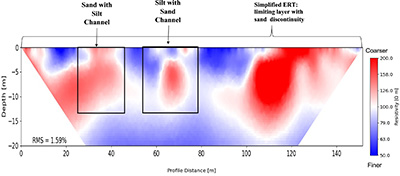
Waterhouse, H., Arora, B., Spycher, N.F., Nico, P.S., Ulrich, C., Dahlke, H.E. and Horwath, W.R., 2021. Influence of agricultural managed aquifer recharge (AgMAR) and stratigraphic heterogeneities on nitrate reduction in the deep subsurface. Water Resources Research, 57(5), p.e2020WR029148.
Reactive transport model to understand the effects of AgMAR management strategies (i.e., by varying the frequency, duration between flooding events, and amount of water) on NO3− leaching to groundwater under different stratigraphic configurations and antecedent moisture conditions.
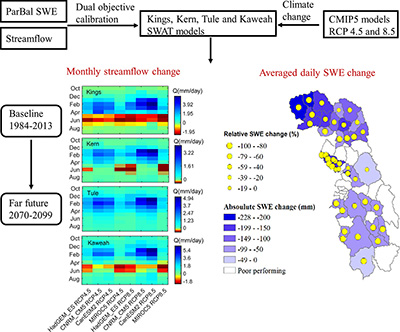
Liu, Z., Herman, J.D., Huang, G., Kadir, T. and Dahlke, H.E., 2021. Identifying climate change impacts on surface water supply in the southern Central Valley, California. Science of the Total Environment, 759, p.143429.
Soil and Water Assessment Tool (SWAT) modeling study to estimate projected changes in snowpack and streamflow in four alpine tributaries to the southern Central Valley, California. Watershed responses are evaluated for four CMIP5 climate models (HadGEM_ES, CNRM-CM5, CanESM2 and MIROC5) and two emission scenarios (RCP 4.5 and RCP 8.5) for 2020–2099.
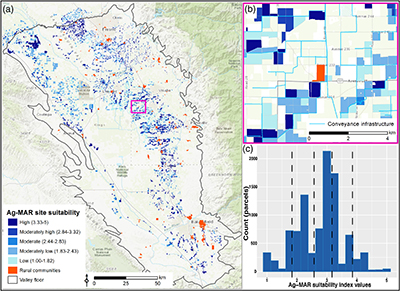
Marwaha, N., Kourakos, G., Levintal, E. and Dahlke, H.E., 2021. Identifying agricultural managed aquifer recharge locations to benefit drinking water supply in rural communities. Water Resources Research, 57(3), p.e2020WR028811.
GIS-based multi-criteria decision analysis that combines biophysical data (soils, land use, and surface water conveyance) with groundwater modeling and particle tracking to identify suitable agricultural land parcels for multibenefit groundwater recharge within well capture zones of 288 rural communities.
2020
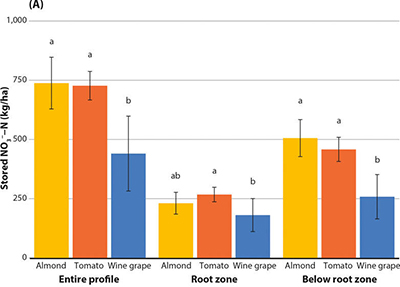
Risk of groundwater contamination under AgMAR in 12 almond orchards, processing tomato fields and wine grape vineyards on low- and high-permeability soils. Wine grape vineyards on permeable soils had the least nitrate leaching risk observed.

Review of experimental studies, numerical approaches, and new technologies available to determine the transport of colloids in transient flow.
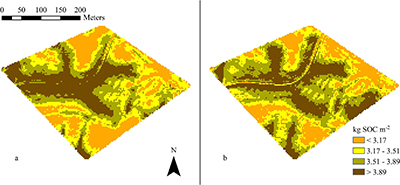
Terrain attributes help explain half of 0–30 cm soil organic carbon variability in rangelands. The 0–10 cm soil thickness stored 47% of the 0–30 cm SOC stock with SOC concentrations twice as high in the 0–10 cm layer (1.40 ± 0.38%) as in the 10–30 cm layer (0.71 ± 0.15% SOC).
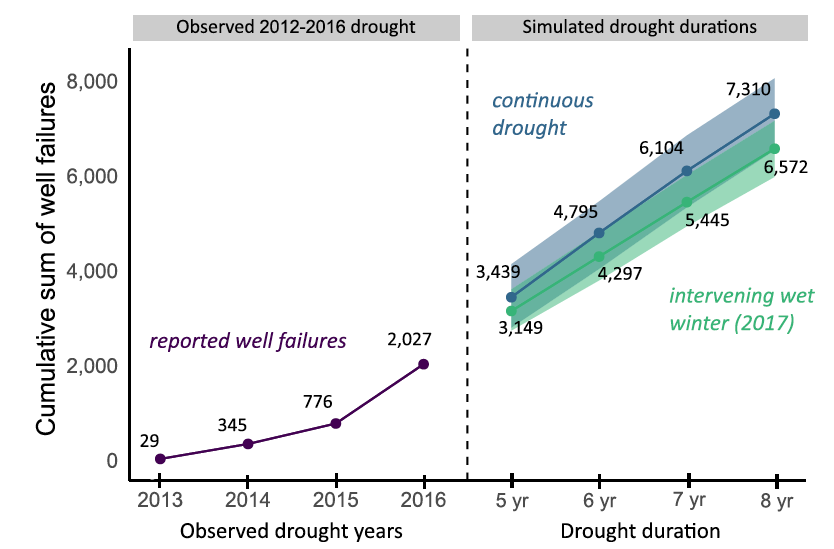
We leverage 943 469 well completion reports and 20 years of groundwater elevation data to develop a spatially-explicit domesticwell failure model coveringCalifornia’s Central Valley.
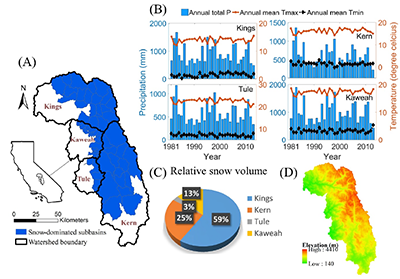
Liu, Z., Yin, J. and E. Dahlke, H., 2020. Enhancing Soil and Water Assessment Tool Snow Prediction Reliability with Remote-Sensing-Based Snow Water Equivalent Reconstruction Product for Upland Watersheds in a Multi-Objective Calibration Process. Water, 12(11), p.3190.
Test of three calibration scenarios considering different calibration parameters and reference datasets to investigate the impact of the Parallel Energy Balance Model (ParBal) snow reconstruction data and snow parameters on the streamflow and snow water-equivalent (SWE) prediction accuracy.
2019
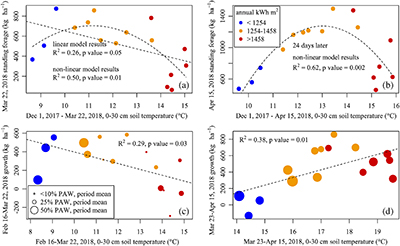
Devine, S.M., O’Geen, A.T., Larsen, R.E., Dahlke, H.E., Liu, H., Jin, Y. and Dahlgren, R.A., 2019. Microclimate–forage growth linkages across two strongly contrasting precipitation years in a Mediterranean catchment. Ecohydrology, 12(8), p.e2156.
In wet years, forage growth is energy limited (light and temperature): warmer sites produce more forage across a 3–4°C soil temperature gradient. In dry years, the warmest topographic positions produced limited forage across a 10°C soil temperature gradient until late season rainfall in March.
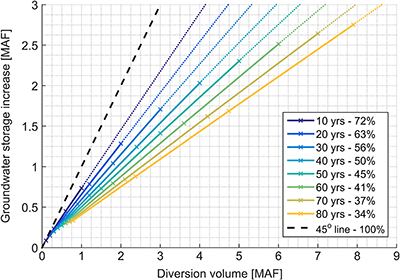
Kourakos, G., Dahlke, H.E. and Harter, T., 2019. Increasing groundwater availability and seasonal base flow through agricultural managed aquifer recharge in an irrigated basin. Water Resources Research, 55(9), pp.7464-7492.
If stream water availability is limited, longer recharge periods at lower diversion rates allow diverting larger volumes and more efficient recharge compared to shorter diversion periods with higher rates. Simulations show recharged stream water increases both groundwater storage and net groundwater contributions to streamflow.
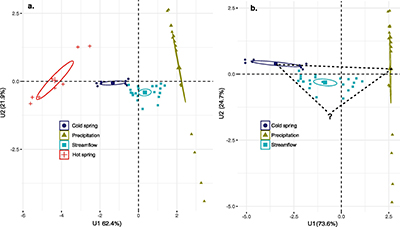
Markovich, K.H., Dahlke, H.E., Arumí, J.L., Maxwell, R.M. and Fogg, G.E., 2019. Bayesian hydrograph separation in a minimally gauged alpine volcanic watershed in central Chile. Journal of Hydrology, 575, pp.1288-1300.
The two tracer, three endmember hydrograph separation revealed groundwater to be the largest and precipitation (rain and snow) to be the smallest contributor, on average, to streamflow with the third unknown endmember contributing around 40% of streamflow during the Winter wet season.
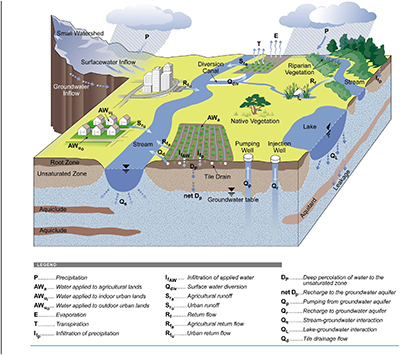
Ghasemizade, M., Asante, K.O., Petersen, C., Kocis, T., Dahlke, H.E. and Harter, T., 2019. An integrated approach toward sustainability via groundwater banking in the southern Central Valley, California. Water Resources Research, 55(4), pp.2742-2759.
We use the Integrated Water Flow Model (IWFM), to evaluate how Ag-MAR projects can affect streamflows, diversions, pumping, and unsaturated zone flows in the southern Central Valley, California.

Wang, C., McNew, C.P., Lyon, S.W., Walter, M.T., Volkman, T.H., Abramson, N., Sengupta, A., Wang, Y., Neto, A.A.M., Pangle, L. and Troch, P.A., 2019. Particle tracer transport in a sloping soil lysimeter under periodic, steady state conditions. Journal of Hydrology, 569, pp.61-76.
We present a particle tracer experiment conducted on a sloped lysimeter receiving periodic rainfall events for 10 days. Four unique, DNA-labelled particle tracers were injected both in sequence and in parallel, together with a conservative tracer (deuterium), over the course of the first day and allowed to move through the system.
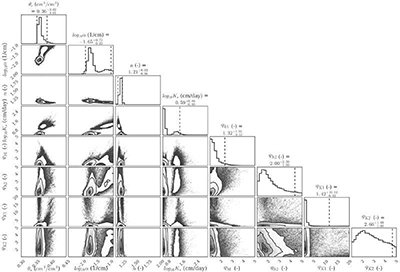
Brunetti, G., Šimůnek, J., Bogena, H., Baatz, R., Huisman, J.A., Dahlke, H. and Vereecken, H., 2019. On the information content of cosmic‐ray neutron data in the inverse estimation of soil hydraulic properties. Vadose Zone Journal, 18(1), pp.1-24.
Cosmic-ray neutron data are used to inversely estimate soil hydraulic properties. The forward neutron operator COSMIC is coupled with the vadose zone model HYDRUS-1D.
2018
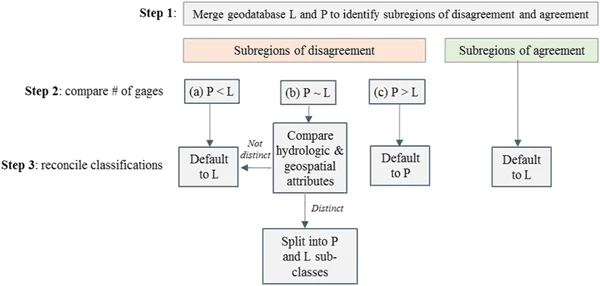
Lane, B.A., Sandoval-Solis, S., Stein, E.D., Yarnell, S.M., Pasternack, G.B. and Dahlke, H.E., 2018. Beyond metrics? The role of hydrologic baseline archetypes in environmental water management. Environmental management, 62, pp.678-693.
We describe the development and analysis of hydrologic baseline archetypes to characterize patterns of flow variability within and between stream classes.
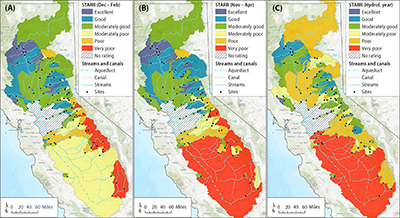
Dahlke, H. and Kocis, T., 2018. Streamflow availability ratings identify surface water sources for groundwater recharge in the Central Valley. California Agriculture, 72(3), pp.162-169.
Using historical daily streamflow data, we developed a spatial index and rating system of high-magnitude streamflow availability for groundwater recharge, STARR, in the Central Valley.
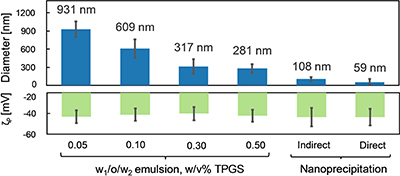
McNew, C.P., Wang, C., Walter, M.T. and Dahlke, H.E., 2018. Fabrication, detection, and analysis of DNA-labeled PLGA particles for environmental transport studies. Journal of colloid and interface science, 526, pp.207-219.
We present methodologies for the preparation of DNA-labeled particles, control of particle size, extraction of DNA-labels, and analysis via quantitative polymerase chain reaction (qPCR).
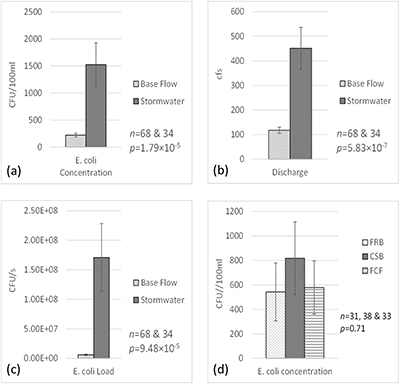
Wang, C., Schneider, R.L., Parlange, J.Y., Dahlke, H.E. and Walter, M.T., 2018. Explaining and modeling the concentration and loading of Escherichia coli in a stream—A case study. Science of the Total Environment, 635, pp.1426-1435.
We found that stormwater, temperature/season and shallow subsurface flow are the three dominant processes driving the fate and transport of E. coli.

Dahlke, H., Brown, A., Orloff, S., Putnam, D. and O’Geen, T., 2018. Managed winter flooding of alfalfa recharges groundwater with minimal crop damage. California Agriculture, 72(1), pp.65-75.
Field experiments were conducted on two established alfalfa stands to determine the feasibility of groundwater recharge and test realistic water application amounts and timings and potential crop damage.
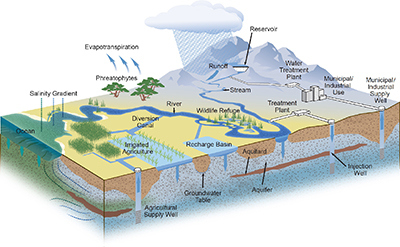
Dahlke, H.E., LaHue, G.T., Mautner, M.R., Murphy, N.P., Patterson, N.K., Waterhouse, H., Yang, F. and Foglia, L., 2018. Managed aquifer recharge as a tool to enhance sustainable groundwater management in California: examples from field and modeling studies. In Advances in chemical pollution, environmental management and protection (Vol. 3, pp. 215-275). Elsevier.
Some common MAR types utilized in California include injection wells, infiltration basins (also known as spreading basins, percolation basins, or recharge basins), and low-impact development.
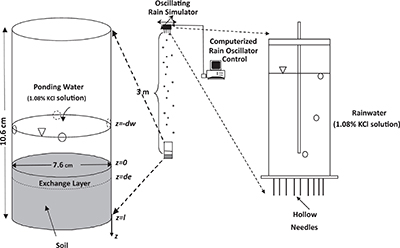
Wang, C., Parlange, J.Y., Schneider, R.L., Rasmussen, E.W., Wang, X., Chen, M., Dahlke, H.E., Truhlar, A.M. and Walter, M.T., 2018. Release of Escherichia coli under raindrop impact: The role of clay. Advances in water resources, 111, pp.1-5.
Using simulated rainfall experiments over soil columns with and without clay in the matrix, we found there was significantly more E. coli released from the non-clay soil because raindrops penetrated more deeply than into the soil with clay.
2017
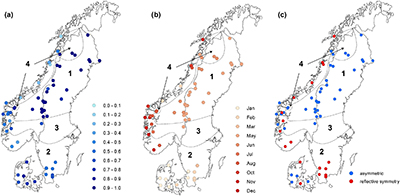
Matti, B., Dahlke, H.E., Dieppois, B., Lawler, D.M. and Lyon, S.W., 2017. Flood seasonality across Scandinavia—Evidence of a shifting hydrograph?. Hydrological Processes, 31(24), pp.4354-4370.
This study explores changes in flood seasonality across near-natural catchments in Scandinavia using circular statistics and trend tests.
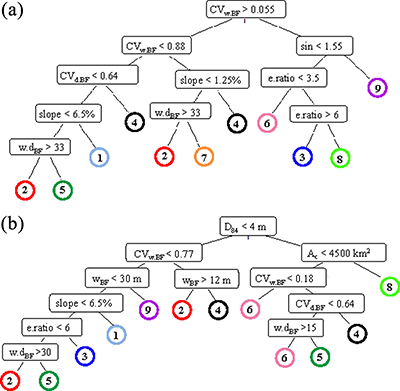
Lane, B.A., Pasternack, G.B., Dahlke, H.E. and Sandoval-Solis, S., 2017. The role of topographic variability in river channel classification. Progress in Physical Geography, 41(5), pp.570-600.
In this study we investigated the utility of topographic variability attributes (TVAs) in distinguishing channel types and dominant channel formation and maintenance processes in montane and lowland streams of the Sacramento River basin, California, USA.
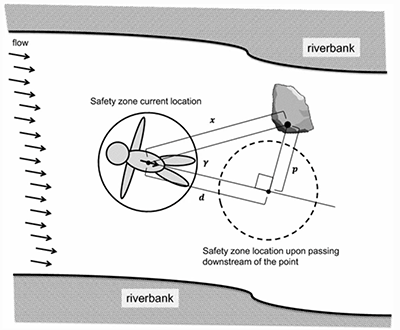
Strom, M.A., Pasternack, G.B., Burman, S.G., Dahlke, H.E. and Sandoval-Solis, S., 2017. Hydraulic hazard exposure of humans swept away in a whitewater river. Natural hazards, 88, pp.473-502.
A novel algorithm was developed and applied to two-dimensional hydrodynamic model outputs to delineate three hydraulic hazard categories associated with conditions for which people may be unable to save themselves: emergent unsavable and steep emergent surfaces, submerged unsavable surfaces, and hydraulic jumps.
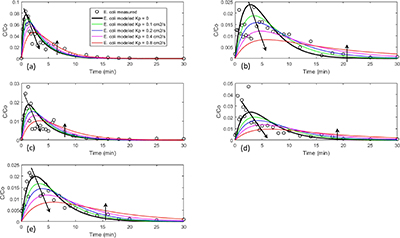
Wang, C., Parlange, J.Y., Rasmussen, E.W., Wang, X., Chen, M., Dahlke, H.E. and Walter, M.T., 2017. Modeling the release of Escherichia coli from soil into overland flow under raindrop impact. Advances in water resources, 106, pp.144-153.
This study shows that transport of microorganisms from soil into overland storm flows can be reasonably modeled using the same principles that have been applied to small mineral particles in previous studies.
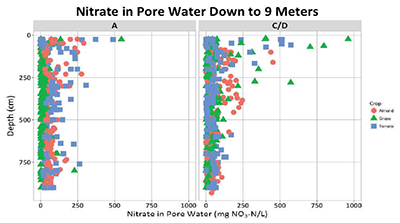
Bachand, P.A., Bachand, S.M., Waterhouse, H., Rath, J., Ung, M., Roy, S., Kretsinger, V., Dalgish, B., Horwath, W., Dahlke, H. and Creamer, C., 2017. Technical report: Modeling nitrate leaching risk from specialty crop fields during on-farm managed floodwater recharge in the Kings Groundwater Basin and the potential for its management.
This project is focused on better understanding the potential impact of On-Farm Flood Capture and Recharge (OFFCR) on groundwater quality pertaining to salts and nitrate and on assessing potential management opportunities.
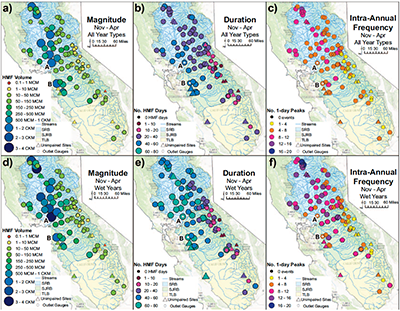
Kocis, T.N. and Dahlke, H.E., 2017. Availability of high-magnitude streamflow for groundwater banking in the Central Valley, California. Environmental Research Letters, 12(8), p.084009.
High-magnitude flow occurs, on average, during 7 and 4.7 out of 10 years in the Sacramento River and the San Joaquin-Tulare Basins, respectively, from just a few storm events (5–7 1-day peak events) lasting for 25–30 days between November and April.
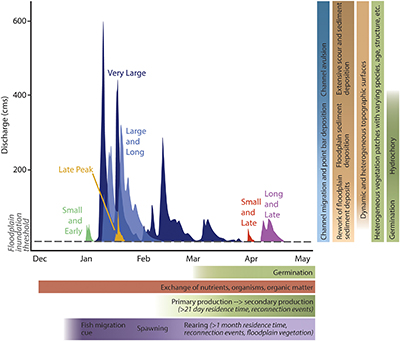
Whipple, A.A., Viers, J.H. and Dahlke, H.E., 2017. Flood regime typology for floodplain ecosystem management as applied to the unregulated Cosumnes River of California, United States. Ecohydrology, 10(5), p.e1817.
This research identifies a flood regime typology and approach for flood regime characterization, using unsupervised cluster analysis of flood events defined by ecologically meaningful metrics, including magnitude, timing, duration, and rate of change as applied to the unregulated lowland alluvial Cosumnes River of California, United States.
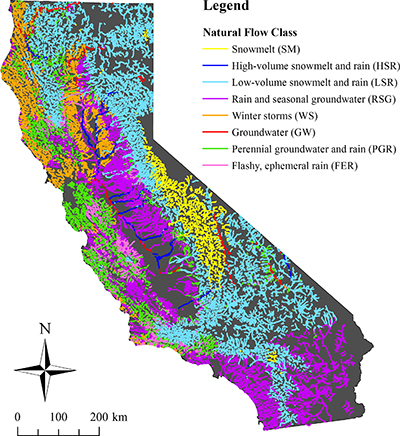
Lane, B.A., Dahlke, H.E., Pasternack, G.B. and Sandoval-Solis, S., 2017. Revealing the diversity of natural hydrologic regimes in California with relevance for environmental flows applications. JAWRA Journal of the American Water Resources Association, 53(2), pp.411-430.
Dominant hydrologic regimes and their physio-climatic controls are revealed, using available unimpaired and naturalized streamflow time-series and generally publicly available geospatial datasets.
2016
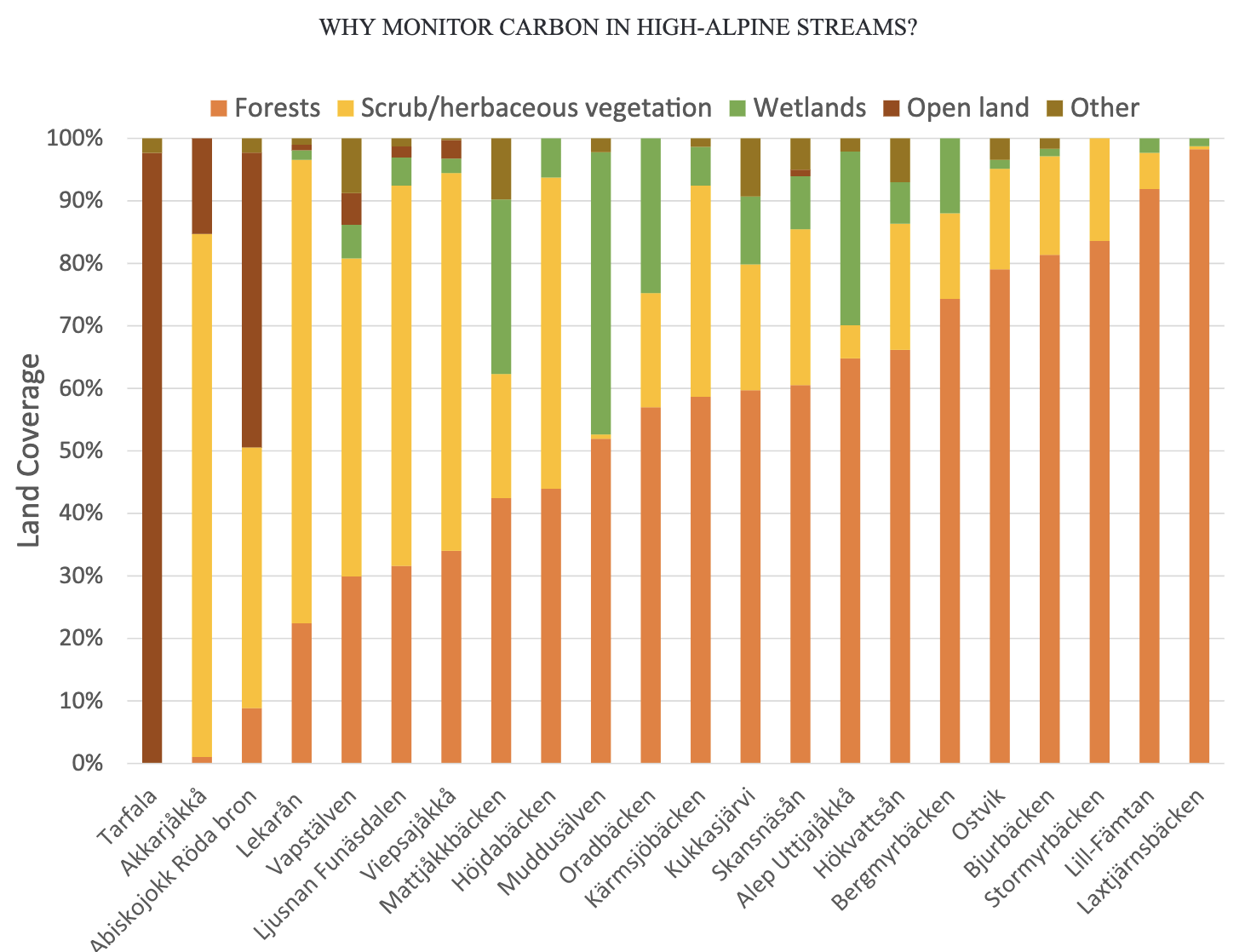
Lyon, S.W., Jantze, E.J., Dahlke, H.E., Jaramillo, F. and Winterdahl, M., 2016. Why monitor carbon in high‐alpine streams?. Geografiska Annaler: Series A, Physical Geography, 98(3), pp.237-245.
In this short communication, we report on dissolved organic and inorganic carbon concentrations from a summer stream monitoring campaign at the main hydrological catchment of the Tarfala Research Station in northern Sweden.
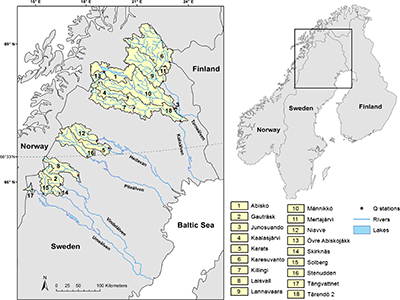
Matti, B., Dahlke, H.E. and Lyon, S.W., 2016. On the variability of cold region flooding. Journal of hydrology, 534, pp.669-679.
This study explores changes in the magnitude and the timing of streamflow in 18 Swedish Sub-Arctic catchments over their full record periods available and a common period (1990–2013).
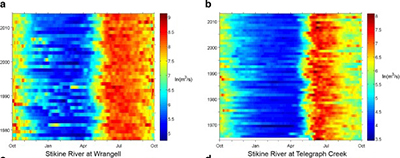
Fleming, S.W., Hood, E., Dahlke, H.E. and O’Neel, S., 2016. Seasonal flows of international British Columbia-Alaska rivers: The nonlinear influence of ocean-atmosphere circulation patterns. Advances in Water Resources, 87, pp.42-55.
We evaluate interannual flow variability in three transboundary Pacific coastal temperate rainforest watersheds in response to El Niño-Southern Oscillation (ENSO), Pacific Decadal Oscillation (PDO), Arctic Oscillation (AO), and North Pacific Gyre Oscillation (NPGO).
2015
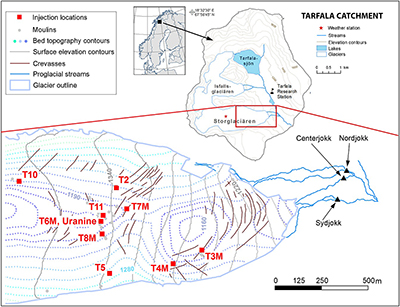
Dahlke, H.E., Williamson, A.G., Georgakakos, C., Leung, S., Sharma, A.N., Lyon, S.W. and Walter, M.T., 2015. Using concurrent DNA tracer injections to infer glacial flow pathways. Hydrological Processes, 29(25), pp.5257-5274.
In this study, we compare the advective–dispersive transport properties and mass recovery rates of two types of synthetic DNA tracers, one consisting of synthetic DNA strands encapsulated into biodegradable microspheres and another consisting of ‘free’ DNA, i.e. not encapsulated to infer glacial melt pathways.
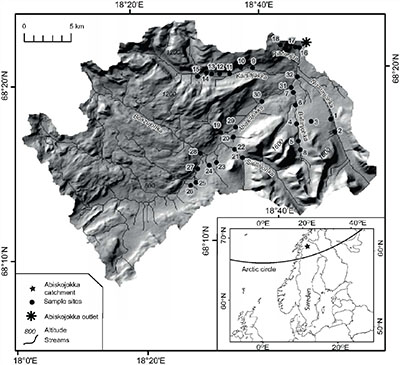
Jantze, E.J., Laudon, H., Dahlke, H.E. and Lyon, S.W., 2015. Spatial variability of dissolved organic and inorganic carbon in subarctic headwater streams. Arctic, antarctic, and alpine research, 47(3), pp.529-546.
DOC, DIC and CO2 concentrations showed significant variability (p < 0.05) relative to catchment size, discharge, specific discharge, lithology, electrical conductivity, weathering products, and the estimated travel time of water through the subcatchment.
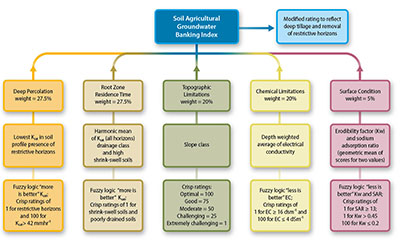
O’Geen, A., Saal, M., Dahlke, H., Doll, D., Elkins, R., Fulton, A., Fogg, G., Harter, T., Hopmans, J., Ingels, C. and Niederholzer, F., 2015. Soil suitability index identifies potential areas for groundwater banking on agricultural lands. California Agriculture, 69(2), pp.75-84.
Using data on soils, topography and crop type, we developed a spatially explicit index of the suitability for groundwater recharge of land in all agricultural regions in California.

Lyon, S.W., Meidani, R., van der Velde, Y., Dahlke, H.E., Swaney, D.P., Mörth, C.M. and Humborg, C., 2015. Seasonal and regional patterns in performance for a Baltic Sea Drainage Basin hydrologic model. JAWRA Journal of the American Water Resources Association, 51(2), pp.550-566.
This study evaluates the ability of the Catchment SIMulation (CSIM) hydrologic model to describe seasonal and regional variations in river discharge over the entire Baltic Sea drainage basin (BSDB) based on 31 years of monthly simulation from 1970 through 2000.
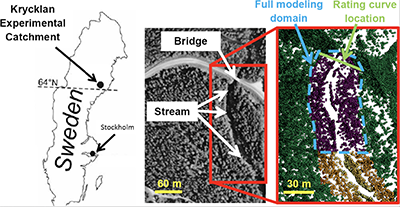
Lyon, S.W., Nathanson, M., Lam, N., Dahlke, H.E., Rutzinger, M., Kean, J.W. and Laudon, H., 2015. Can low-resolution airborne laser scanning data be used to model stream rating curves?. Water, 7(4), pp.1324-1339.
We tested synthetically thinned high-resolution (more than 2 points/m2) ALS data as a proxy for low-resolution data at a point density equivalent to that obtained within most national-scale ALS strategies.
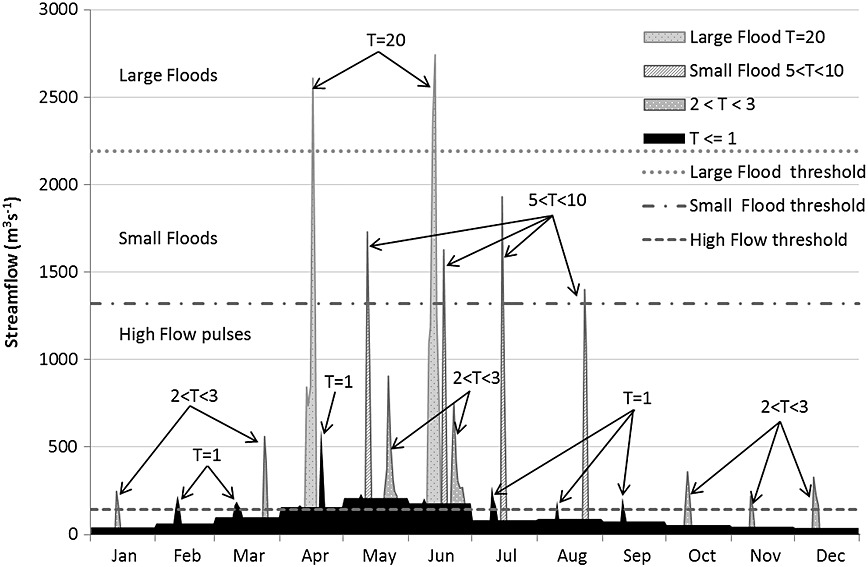
Ai, X.S., Sandoval-Solis, S., Dahlke, H.E. and Lane, B.A., 2015. Reconciling hydropower and environmental water uses in the Leishui River Basin. River Research and Applications, 31(2), pp.181-192.
This research explores alternative policies to improve the water supply for two conflicting uses, hydropower and environmental, using the Leishui River basin and Dongjiang reservoir as a case study.
2014
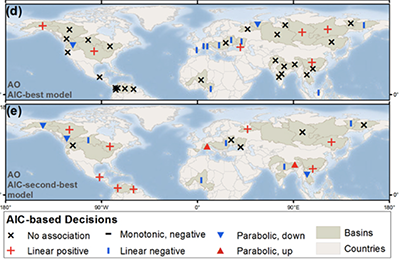
Fleming, S.W. and Dahlke, H.E., 2014. Parabolic northern-hemisphere river flow teleconnections to El Niño-Southern Oscillation and the Arctic Oscillation. Environmental Research Letters, 9(10), p.104007.
We apply an Akaike Information Criterion-based polynomial selection approach to investigate annual flow volume teleconnections for 42 of the northern hemisphere’s largest ocean-reaching rivers.
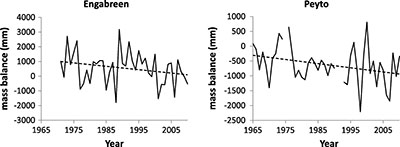
Fleming, S.W. and Dahlke, H.E., 2014. Modulation of linear and nonlinear hydroclimatic dynamics by mountain glaciers in Canada and Norway: Results from information-theoretic polynomial selection. Canadian Water Resources Journal/Revue canadienne des ressources hydriques, 39(3), pp.324-341.
Highly nonlinear (parabolic) atmospheric teleconnections to the Arctic Oscillation and El Niño-Southern Oscillation were confirmed in Norway and Canada, respectively, and their corresponding hydrologic effects were detected.
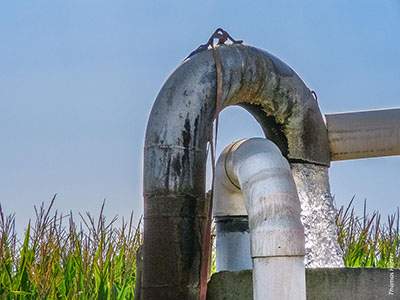
Harter, T. and Dahlke, H., 2014. Out of sight but not out of mind: California refocuses on groundwater. California Agriculture, 68(3), pp.54-55.
Opinion piece on the need for groundwater recharge.
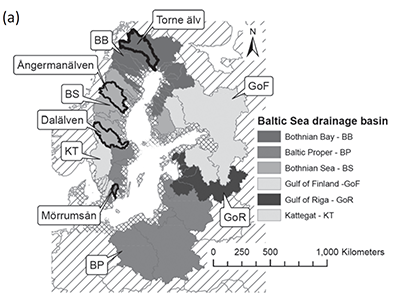
Saaltink, R., van der Velde, Y., Dekker, S.C., Lyon, S.W. and Dahlke, H.E., 2014. Societal, land cover and climatic controls on river nutrient flows into the Baltic Sea. Journal of Hydrology: Regional Studies, 1, pp.44-56.
This study investigated the spatial distribution of trends in nitrogen (N) and phosphorus (P) in relation to societal, land cover and climatic changes in the Baltic Sea Drainage Basin.
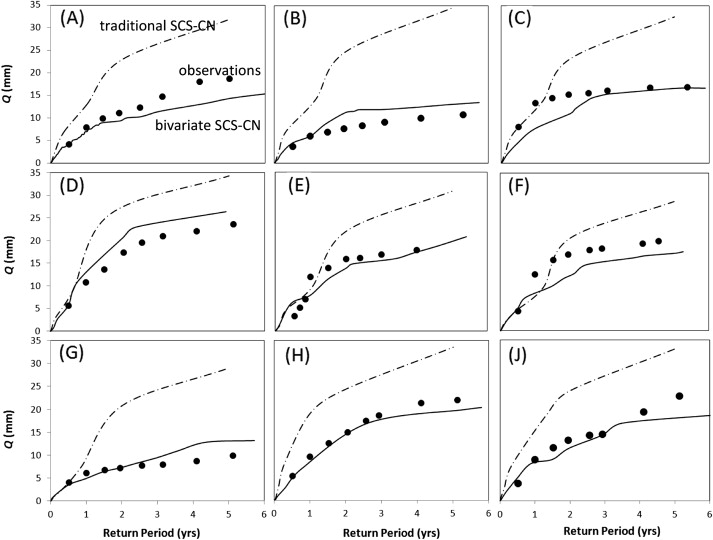
Cheng, X., Shaw, S.B., Marjerison, R.D., Yearick, C.D., DeGloria, S.D. and Walter, M.T., 2014. Improving risk estimates of runoff producing areas: Formulating variable source areas as a bivariate process. Journal of environmental management, 137, pp.146-156.
By considering the development of overland flow as a bivariate process, we incorporated both rainfall and antecedent soil moisture conditions into a method for predicting VSAs based on the Natural Resource Conservation Service-Curve Number equation.
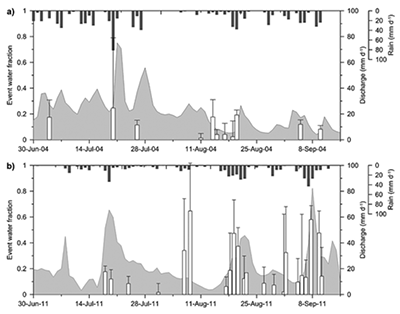
Dahlke, H.E., Lyon, S.W., Jansson, P., Karlin, T. and Rosqvist, G., 2014. Isotopic investigation of runoff generation in a glacierized catchment in northern Sweden. Hydrological Processes, 28(3), pp.1383-1398.
We used two-component hydrograph separation along with isotope ratios (δ18O and δD) of rainwater and daily streamwater samplings to estimate relative fraction and uncertainties of source water contributions in the Tarfala Catchment, Sweden.
Earlier
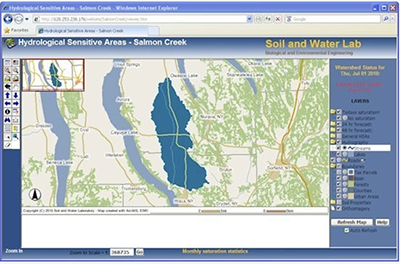
Dahlke, H.E., Easton, Z.M., Fuka, D.R., Walter, M.T. and Steenhuis, T.S., 2013. Real-time forecast of hydrologically sensitive areas in the Salmon Creek Watershed, New York State, using an online prediction tool. Water, 5(3), pp.917-944.
This paper presents a prototype for a web-based HSA prediction tool developed for the Salmon Creek watershed in upstate New York to assist producers and planners in quickly identifying areas at high risk of generating storm runoff.
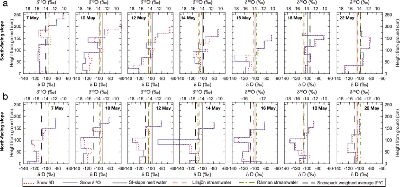
Dahlke, H.E. and Lyon, S.W., 2013. Early melt season snowpack isotopic evolution in the Tarfala valley, northern Sweden. Annals of Glaciology, 54(62), pp.149-156.
This study investigated the stable water isotopic (δ18O and δD) evolution of two snowpacks located at the same elevation on a north-facing (Nf) and a south-facing (Sf) slope within the Tarfala research catchment, northern Sweden, and the potential impact of pre-freshet snowpack melt on streamflow.
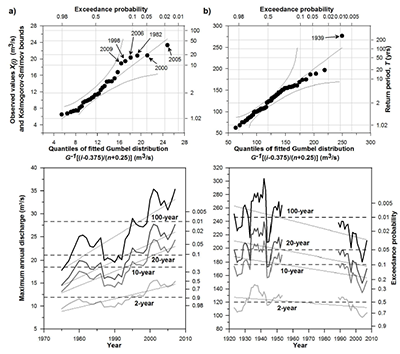
Dahlke, H.E., Lyon, S.W., Stedinger, J.R., Rosqvist, G. and Jansson, P., 2012. Contrasting trends in floods for two sub-arctic catchments in northern Sweden–does glacier presence matter?. Hydrology and Earth System Sciences, 16(7), pp.2123-2141.
Hydrologic trends indicated an amplification of the streamflow and flood response in the highly glacierized catchment and a dampening of the response in the non-glacierized catchment.
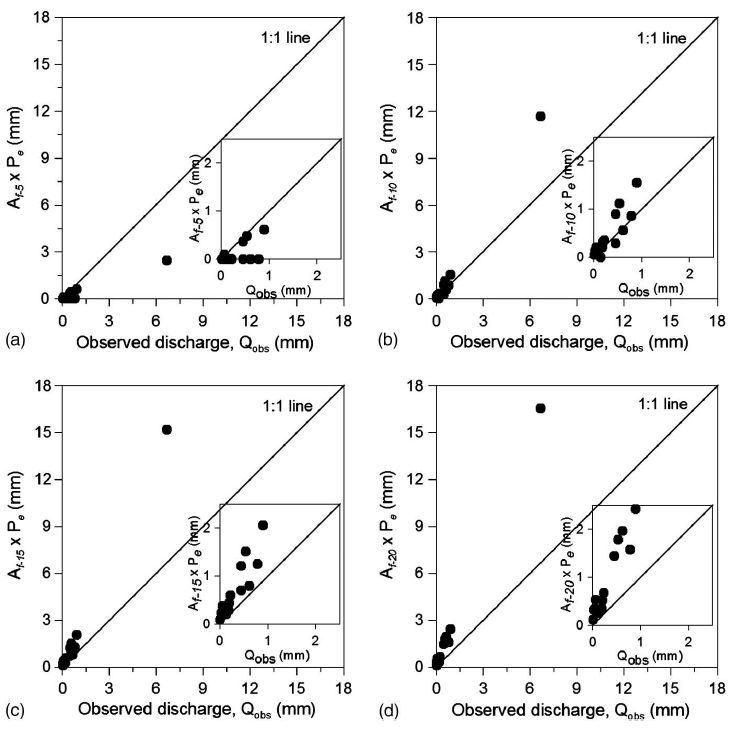
Dahlke, H.E., Easton, Z.M., Walter, M.T. and Steenhuis, T.S., 2012. Field test of the variable source area interpretation of the curve number rainfall-runoff equation. Journal of irrigation and drainage engineering, 138(3), pp.235-244.
In this paper, we compare saturated runoff-contributing areas predicted with the VSA interpretation of the SCS-CN method with field-measured VSAs in a 0.5 ha hillslope in central New York State.
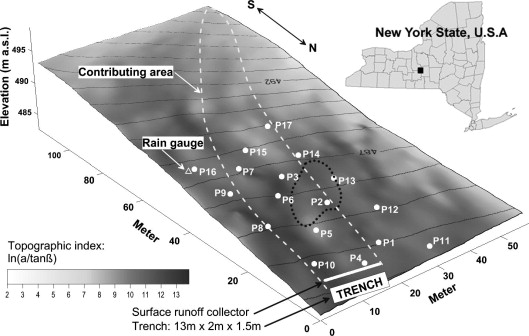
Dahlke, H.E., Easton, Z.M., Lyon, S.W., Walter, M.T., Destouni, G. and Steenhuis, T.S., 2012. Dissecting the variable source area concept–subsurface flow pathways and water mixing processes in a hillslope. Journal of Hydrology, 420, pp.125-141.
Measurements of water fluxes in the trench, upslope water table dynamics, surface and bedrock topography, and isotopic and geochemical tracers have been combined for a four-dimensional (space–time) characterization of subsurface storm flow responses.
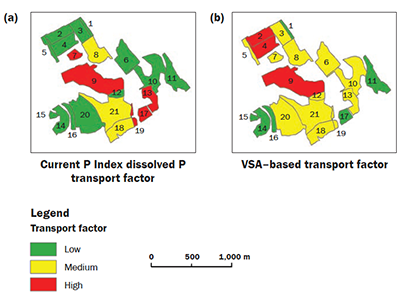
Marjerison, R.D., Dahlke, H., Easton, Z.M., Seifert, S. and Walter, M.T., 2011. A Phosphorus Index transport factor based on variable source area hydrology for New York State. journal of soil and water conservation, 66(3), pp.149-157.
Here we propose a VSA-based transport factor that uses the topographic index concept to indicate runoff risk. We compared both transport factors based on the current New York State P Index and our VSA-based P Index to field measures of runoff probability across an abandoned agricultural site in upstate New York.
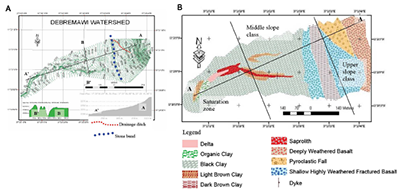
Tebebu, T.Y., Abiy, A.Z., Zegeye, A.D., Dahlke, H.E., Easton, Z.M., Tilahun, S.A., Collick, A.S., Kidnau, S., Moges, S., Dadgari, F. and Steenhuis, T.S., 2010. Surface and subsurface flow effect on permanent gully formation and upland erosion near Lake Tana in the northern highlands of Ethiopia. Hydrology and Earth System Sciences, 14(11), pp.2207-2217.
Historic gully development in a section of the Debre-Mawi watershed was estimated with semi structured farmer interviews, remotely sensed imagery, and measurements of current gully volumes.